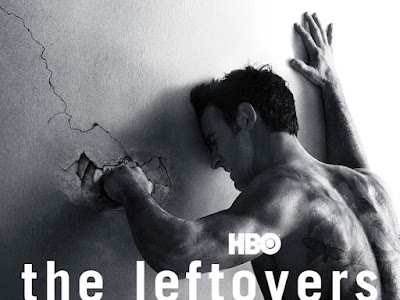THE GRAPES OF WRATH (1940): Law, Dust, and the American Dream on Trial
Few Hollywood classics stand at the crossroads of cinema, literature, and socio-legal memory quite like John Ford’s The Grapes of Wrath (1940). Adapted from John Steinbeck’s Pulitzer-winning novel published only a year earlier, the film does far more than translate a best-seller to celluloid; it functions as an evidentiary artifact of Depression-era America—part courtroom exhibit, part sociological survey, part family tragedy. Watching it today, one senses the reel unspooling not merely as entertainment but as an indictment, a pleading, and a lament filed in the public record of the United States.

I. THE PLOT AS LEGAL CASEFILE
Tom Joad (Henry Fonda) is paroled from the Oklahoma State Penitentiary and returns to a family farm blasted into nonexistence by dust storms, debt, and bank foreclosures. The Joads, among thousands labeled “Okies,” cram their possessions onto a rickety truck and head for California, lured by handbills promising plentiful orchard work at decent wages. Instead they are met by policing checkpoints, private-security thugs, vigilante mobs, and labor contractors who keep wages at subsistence level—when they pay at all. Along the journey: death of grandparents, dissolution of the family unit, and the hardening of Tom’s moral awareness into a fledgling social consciousness. The culminating image—Ma Joad’s steely resilience framed against the road ahead—echoes Ford’s own belief that history is written by anonymous strength rather than celebrated power.
II. ADAPTING STEINBECK
Nunnally Johnson’s screenplay condenses Steinbeck’s 600-page sprawl into 128 taut minutes without eviscerating its sociopolitical marrow.
Where Steinbeck’s prose deploys interior monologue and intercalary chapters, Ford leverages chiaroscuro cinematography—Gregg Toland’s high-contrast lighting turns every dust mote into evidence, every shadow into subtext. The result is less word-for-word fidelity than mood-for-mood jurisprudence: a cinematic brief that preserves the book’s central counts of indictment against corporate agribusiness, class hierarchy, and state complicity.
III. WHEN CAPITAL MEETS CLIMATE
The Dust Bowl was not purely an ecological crisis but also a market failure. Over-plowing, speculative credit, and crop-price collapse left smallholders leveraged beyond recovery. Banks assert liens, tractors raze homesteads, and capitalism’s invisible hand feels distinctly iron-fisted.
The highway becomes a longitudinal study in marginalization. Roadside diners sneer at the “Okie accent,” gas-station owners inflate prices, and Californian localities erect quasi-legal barriers.
The trip west is framed as prolonged traumatic stress. Note the faces of the Joad children—wide-eyed, hollow-cheeked, made startlingly real by Ford’s refusal to sentimentalize.
IV. THE MIGRANTS AS ‘OTHERS’: EARLY ECHOES OF XENOPHOBIA
Ironically, the “Okies” are U.S. citizens, yet treated like foreign intruders. Their makeshift license plates become markers of deviance. Contemporary parallels to anti-immigrant rhetoric are chilling; the Joads’ California antagonists speak in register strikingly close to 21st-century soundbites about “job theft” and “public-order threats.” Ford places audiences inside the migrants’ gaze, compelling viewers to evaluate the constitutional promise of equal protection when confronted by economic outsiders turned internal aliens.
V. LABOR, STRIKE, AND SOCIAL CONTRADICTIONS
The film’s centerpiece—a secret strike meeting in a peach orchard—articulates industrial-relation theory more sharply than many academic treatises. Wage suppression, threat of replacement labor, and the weaponization of police converge into a microcosm of class conflict.
VI. FAMILY DISINTEGRATION: FROM PATRIARCHY TO MATRIARCHY
Pa Joad’s authority erodes mile by mile, while Ma emerges as moral compass. The family’s fragmentation (Granpa and Granma die, Noah wanders off, Connie abandons pregnant Rose-of-Sharon, Tom self-exiles to evade arrest) mirrors the social unmooring wrought by economic cataclysm. Yet Ma’s closing line, “We’re the people,” offers jurisprudential optimism: rights travel not on paper but in collective memory.
VII. CINEMA OF JOHN FORD
Ford's thematic preoccupation is justice. From Stagecoach to Young Mr. Lincoln, he returns to questions of who gets to adjudicate American myth. In The Grapes of Wrath he swaps the frontier for migrant camps, yet the remain about justice.
Ford’s politics were complex. In this film, he wields cinema to argue that a fair, inclusive society is achievable when law aligns with empathy. By shedding heroic individualism for collective struggle, Ford re-imagines the Western road as a path toward redistributive justice.
VIII. PROPAGANDA OR EMPATHY?
Some contemporary reviewers scorned the picture as “Communist,” yet the U.S. Office of Censorship let it pass unhindered in wartime re-issues. The reason: Ford embeds critique within uncontestable patriotism. Rather than calling for revolution, the film insists on enforcing the law already on the books.
CONCLUSION – CINEMA AS A CALL TO VERDICT
Ultimately, The Grapes of Wrath endures because it places the spectator in the jury box. Will we acquit systemic inequality or deliver a guilty verdict? Ford provides the evidence, Steinbeck supplied the pleadings, and the Joads—clambering onto their battered truck at dawn—remain our star witnesses.
In bringing the Dust Bowl diaspora to theaters, John Ford made a film that is not just about law but of law, enriching our collective jurisprudence with moving images of dignity under duress. Seventy-plus years later, the picture still asks the only question that matters in both cinema and the courtroom: Now that you know, what will you do?
Director: John Ford
Writers: Nunnally Johnson, John Steinbeck
Stars: Henry Fonda, Jane Darwell, John Carradine
Trailer:

Comments
Post a Comment